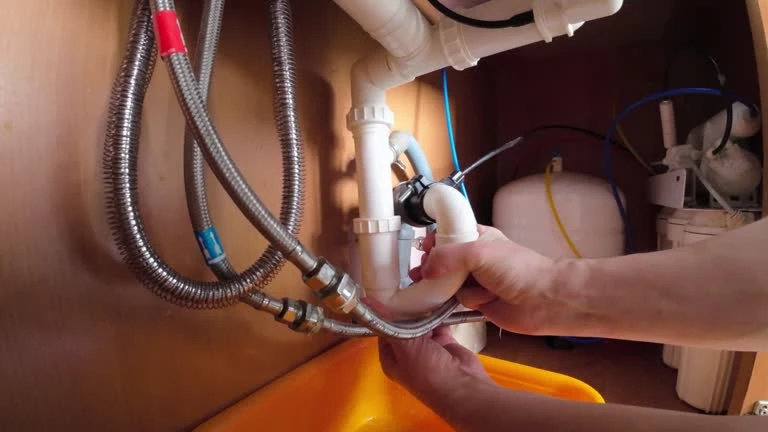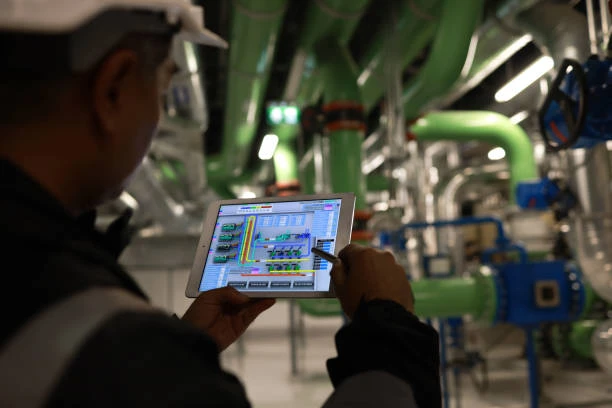Pressure reducing valves (PRVs) play a vital role in water distribution systems, ensuring that water pressure remains at optimal levels for both safety and efficiency. These valves help prevent damage to pipes and fixtures, regulate the flow of water, and enhance the overall functioning of the plumbing system. This article explores the importance, types, installation process, and maintenance of pressure reducing valves, offering a comprehensive guide to understanding how they work and their essential role in water flow control.
The Function of Pressure Reducing Valves
Pressure reducing valves are designed to reduce the incoming water pressure to a safe and manageable level before it enters a building’s plumbing system. In many areas, the municipal water supply has high pressure, which could damage pipes, appliances, and fixtures. PRVs regulate this pressure, ensuring that it does not exceed a preset limit. For example, residential plumbing systems often operate at a pressure of 40-60 psi, which is far lower than the pressure that comes from the public water system. The valve ensures the pressure remains within a range that is safe for the entire plumbing system.
Why Water Pressure Control Matters
Water pressure control is crucial for several reasons. High water pressure can cause excessive wear on pipes, faucets, and appliances, leading to leaks or bursts. Additionally, high pressure can reduce the lifespan of water heaters, dishwashers, washing machines, and other plumbing fixtures. On the other hand, low water pressure can make everyday tasks like showering, washing dishes, and using the washing machine more difficult and inefficient. A pressure reducing valve helps maintain the balance by regulating the water pressure to ensure that it remains neither too high nor too low, providing comfort and durability.
Types of Pressure Reducing Valves
Pressure reducing valves come in various types, with each suited to different applications. The two main categories are direct-acting PRVs and pilot-operated PRVs. Direct-acting valves use a spring mechanism to control water pressure, while pilot-operated valves use an external control system to regulate pressure. Direct-acting PRVs are typically used in smaller systems, like residential plumbing, due to their simplicity and cost-effectiveness. Pilot-operated PRVs, on the other hand, are better suited for larger systems, such as commercial or industrial applications, as they can handle higher pressures and provide greater precision.
The Benefits of Pressure Reducing Valves
Using pressure reducing valves offers several significant benefits. One of the most important benefits is protecting plumbing infrastructure from the damage caused by high water pressure. This includes reducing wear on pipes, faucets, and fixtures. PRVs also help prevent water wastage by regulating flow and pressure. When the pressure is too high, the water flow can become excessive, leading to wasted resources. PRVs help optimize water usage, which can contribute to reducing utility bills. Moreover, they extend the lifespan of appliances, preventing costly repairs or replacements.
Installing Pressure Reducing Valves
Installing a pressure reducing valve requires some expertise to ensure the correct function of the entire system. The installation process typically involves locating the valve near the main water supply line, where the incoming water pressure needs to be reduced. The valve is usually installed in a vertical position to allow for easy water flow control. It is crucial to check that the valve is compatible with the pressure rating of the system. Professional plumbers often handle the installation to ensure proper calibration and avoid potential damage to the water distribution system. After installation, the valve must be tested to ensure it functions as expected.
Maintaining Pressure Reducing Valves
Although pressure reducing valves are low-maintenance, periodic checks are essential to ensure their continued performance. One of the most common maintenance tasks is checking the valve for any signs of wear, leaks, or damage. Over time, the valve’s internal components may deteriorate, affecting its ability to regulate pressure. Additionally, sediment or debris in the water supply can clog the valve, which may reduce its efficiency. Regular maintenance includes inspecting the valve, cleaning it, and ensuring that it operates at the correct pressure setting. In some cases, a professional plumber may need to recalibrate or replace the valve to keep the system running efficiently.
Troubleshooting Pressure Reducing Valves
Pressure reducing valves, like any other plumbing component, can experience issues that affect the water flow and pressure. One common problem is a sudden increase or decrease in water pressure, which could indicate a malfunction in the valve. If the valve becomes clogged with debris, it may not regulate pressure effectively. Another issue is valve leakage, which can lead to water wastage and damage to the surrounding area. In such cases, it is essential to inspect the valve for any visible damage or wear and replace the components if necessary. Regular troubleshooting helps ensure the proper functioning of the PRV and the overall plumbing system.
Conclusion
Pressure reducing valves are essential components of water distribution systems. They regulate water pressure, ensuring it stays within a safe and optimal range for both residential and commercial applications. By preventing damage to pipes and fixtures, reducing water wastage, and extending the lifespan of appliances, PRVs contribute to a more efficient and sustainable plumbing system. Proper installation and maintenance of these valves are critical to ensure they function effectively over time. Whether you are managing a home plumbing system or overseeing a large commercial building, pressure reducing valves play a crucial role in ensuring water flow control and maintaining system efficiency.
IFAN Products international standards
IFAN products strictly adhere to a comprehensive range of international standards, encompassing ISO 15874, EN 15874, ASTM F2389, DIN 8077/8078, GB/T 18742, NBR 15884, ISO 15494, EN ISO 15494, GB/T 19472, NBR 15494, ASTM 2846 (501), DIN 8079/8080 (502), ASTM F441/F441M SCH80 (503), DIN (504), DIN (505), GB/T 18993, AS/NZS 1477, CSA B137.6, NSF/ANSI 14, TIS 17-2532/1131-2535, BS 3505, BS 4346 (801), ASTM D1785 SCH40 (802), ASTM D1785 SCH80 (803), DIN (804), GB (805), GB (806), GB(901), DWV(902), ASTM D2665 (903), along with ASTM D2241, D2665, D2729, and F441/F441M series, ISO 1452, EN ISO 1452, DIN 8061/8062, GB/T 10002, AS/NZS 1477, JIS K6741, CSA B137.3, and other national and industry norms.
Connect
IFAN is a Chinese manufacturer of plastic pipes, fittings and valves with 30 years of experience. If you are interest in IFAN copper fittings, copper valves, plastic pipes and fittings, please contact us. IFAN offers you a variety of standard pipes to meet your specific needs. Click below to learn more about IFAN’s wide range of affordable and cost-effective valve products and piping system related products.
We will reply your email or fax within 24 hours.
You can call us at any time if there is any question on our production.
For more information,pls visit our webside https://waterpipefitting.com/
Pls Mailto: [email protected]
Whatsapp: +8615088288323














Recent Comments